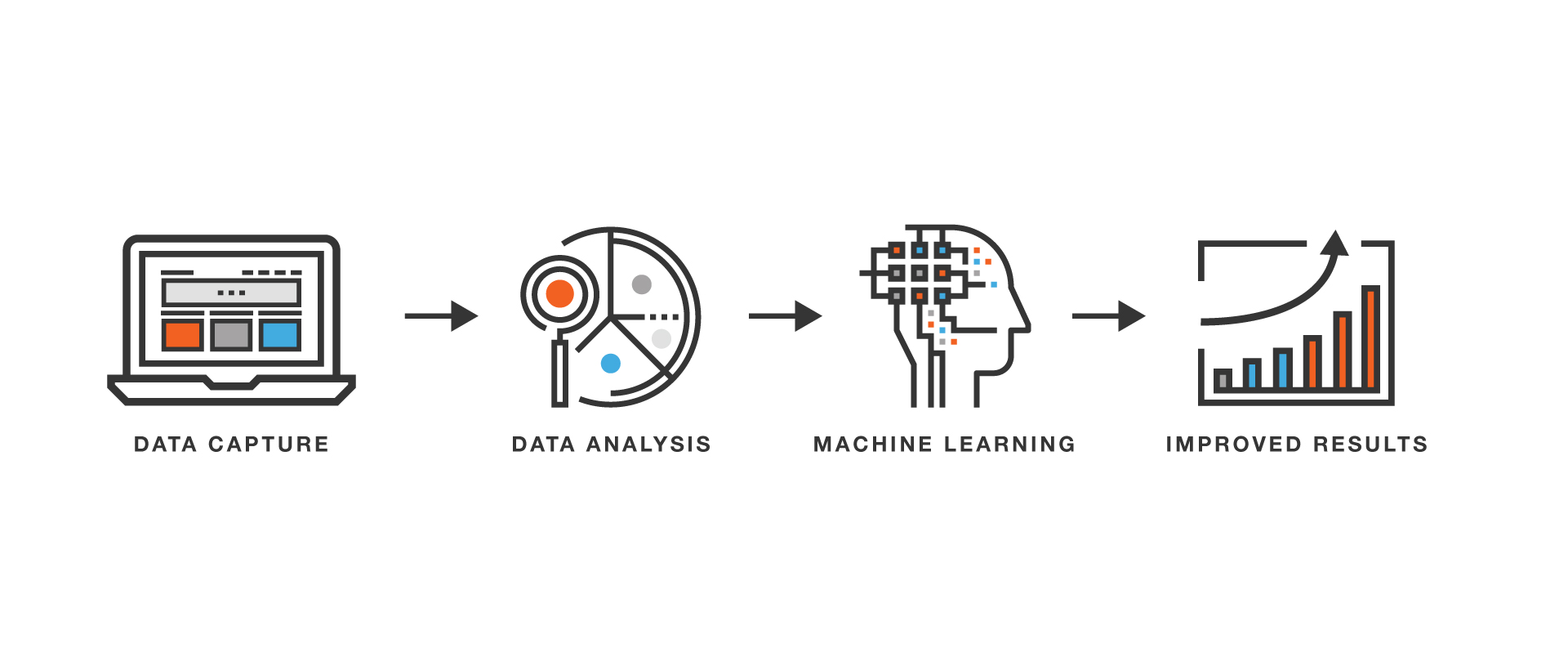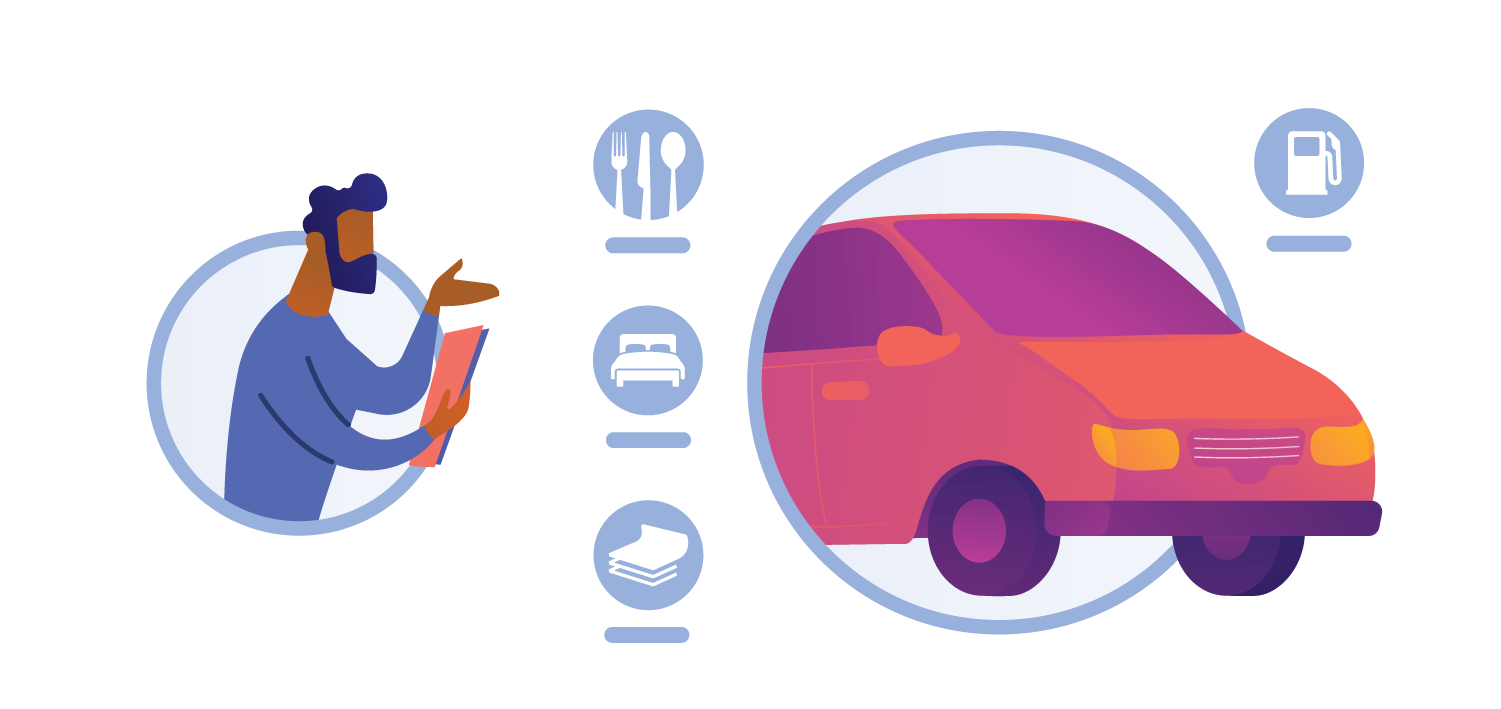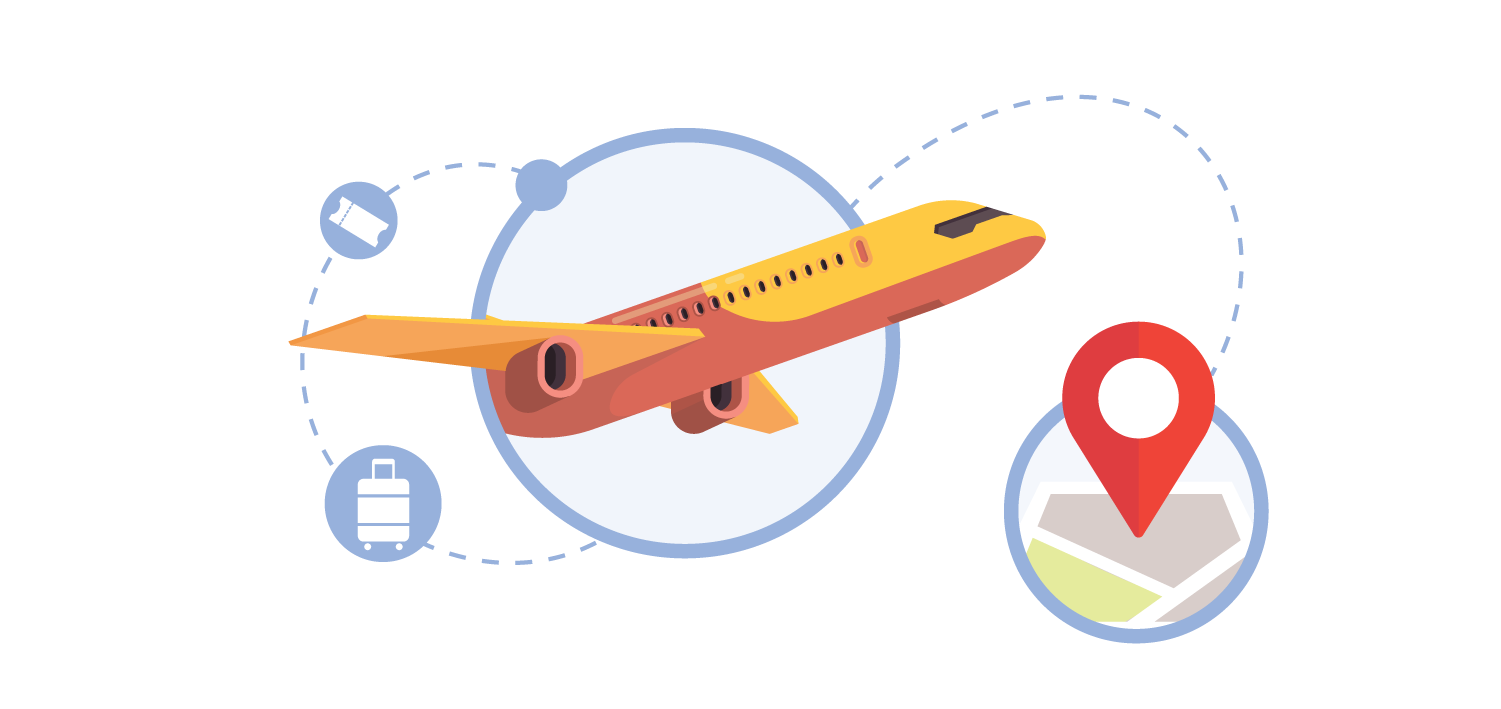Reality Check: 5 Truths About Digital Marketing for Higher-Ed Enrollment
By Nicole Piering and Ann Levy
Updated August 2020
As you finalize your plans and begin launching communications for Fall 2021 recruitment, now is the time to make sure you’re getting the most out of your digital marketing efforts. When it comes to digital marketing, there are many myths that other agencies may spout in order to attract new clients. Here, we set the record straight and debunk some of the most common myths about digital marketing, specifically in regards to higher education enrollment. Below are five key considerations to keep in mind when discussing your digital media strategy with a new agency partner.

1. Immediate Tinkering is All Smoke and Mirrors
According to digital advertising giants like Google and Facebook, all campaigns require a learning phase to allow the systems to properly optimize. In most cases, this can take two to four weeks beyond the launch. Facebook, for example, needs 50 leads to come in for the campaign to complete its learning stage. It makes sense though; the platforms need to accumulate data points on what performs best in a campaign, and the more data you have, the more precise the picture will be of your audience, the creative that resonates, and who will be more likely to take the desired action.
We want our campaigns to perform based on data-driven optimizations, and this can only occur if we give the platforms time to learn, which doesn’t happen overnight. While we know it’s scary to not see immediate results, we find that campaigns tend to perform better after being given some time to optimize. At that point, we can confidently make adjustments and optimizations that are in the best interests of your campaign.
Additionally, it’s worth noting that every change to a campaign restarts the learning phase. While the new learning phase may not be as long as the initial one, the platforms are constantly learning and re-learning, which is why immediate tinkering is never recommended.
2. Don’t Let Impressions Impress You
It’s easy to get impressions, but it’s hard to get qualified clicks, and it’s even harder to get high-quality conversions. Many other digital marketing agencies will inflate their reports with impressions garnered through one of many display networks. While these display networks can provide some value, they’re also often wrought with fraud and bots that contribute falsely inflated numbers of impressions. Display ads are an important element to a digital branding campaign, but unless you’re receiving clicks and conversions, there’s no way to truly know that you’re reaching the right people.
The moral of the story here is that impressions are the least critical element of a digital media campaign. Anyone can get impressions, but it takes truly skilled marketers to get clicks and conversions.

3. Less Is (Sometimes) More
We’ve run thousands of campaigns exclusively for our higher education partners (not many agencies can say that!) and we’ve learned that there’s no one-size-fits-all recipe for a successful campaign. In fact, we’ve been saying this for years.
While there may be a hot new platform suddenly garnering a ton of buzz, that doesn’t always mean it’s the right fit for your audience or goals. For example, we use Snapchat to engage younger audiences with a branding message, but we know from our experience that those campaigns will rarely lead to an action being taken on your site. Keeping that in mind, despite Snapchat being “hot,” we may recommend other platforms to get you leads, applications, event registrations, or prevent melt. It all depends on your audience, goals, and budget.
Sometimes, both we and our partner institutions would like to run ads on every platform, but we just don’t have the budget to do so responsibly and still garner results. This is where our experience comes in. We can take a look at similar campaigns we’ve run in the past and suggest the platforms that are most likely to achieve your goals while staying within your budget.

4. Every Flight Needs a Safe Landing (Page)
In order to achieve the best results on a digital media campaign, it’s important to focus on where your ads are driving. In almost all cases, your ads should drive to a strong landing page. The page should be designed in a manner that’s user-friendly and cohesive with your ads. It should render quickly on a mobile device, provide the visitor with an incentive to submit their information, and the embedded inquiry form should only have three or four required fields.
Pro tip: When it comes to campaigns running on Google Ads, the landing page is a critical element of a successful campaign, as it actually impacts the performance and delivery of your ads. In order to achieve maximum success with Google text ads, you want to have your keywords appear not only in your keyword lists, but also in your ads, and of course, on your landing pages. (Plus, a quick load time will only improve your Google quality score!)
In select instances, you may opt to use an in-platform lead generation form in lieu of a traditional landing page. When used under the right circumstances, these in-platform lead generation forms are also safe places to land. In fact, we’ve seen much higher conversion rates using these forms, so it’s important to discuss this option with your account team when planning your digital strategy. However, these forms aren’t right for every occasion. Each campaign has unique goals, and it’s important that we align our strategy in a way that helps you best achieve your desired outcomes, whether that means driving to a landing page or lead generation form.
5. You DO Need a Partner with Strong Higher Ed Experience
When you partner with us, you’re not getting a generic agency that works in multiple verticals or areas of “expertise” (a jack of all trades, master of none, anyone?) — you’re getting an agency that specializes in higher education, with professionals who have worked in the field. We have higher ed specialists across departments who have been on your side of the desk, including former admissions counselors, directors, and even VPs. They work together to develop relevant customized digital campaign strategies for every one of our college and university partners. Have you met another agency partner that can say the same?
Enrollment strategy is what we do, day in and day out. From balancing domestic vs. international populations and high-performing vs. low-performing academic programs, to lifting a university brand, we have you covered. Additionally, our real-time reporting dashboards will provide you with essential data, available at your fingertips, at any time. Our university partners can also rely on the fact that we’re here to advise and support your goals as an extension of your internal team.
Don’t sell yourself short with an agency that won’t understand your enrollment goals and vision.
If you’d like to discuss potential digital media campaign strategies that will support your institution’s goals for Fall 2021 and beyond, please reach out. We’d be happy to help you pinpoint the tactics that will help you achieve optimal results.
Dollars and Sense: Examining the Real Cost of Recruitment
August 2020 has arrived, and as fall semesters begin throughout the country, the stage is set with four undeniable enrollment management facts:
- The profound effects of COVID-19 will linger in the upcoming year—forcing admission offices to communicate, think, and work differently.
- Admissions and enrollment officers who have been laser focused on this fall’s class will be rapidly shifting their attention to the Fall ’21 start.
- The vast majority of institutions are beginning the recruitment cycle with a deficit in Fall ’21 prospects due to the lack of spring recruitment and summer campus visits.
- You are likely being asked to accomplish more than ever on the tightest budget you’ve ever seen.
With traditional in-person recruitment tactics still largely off the table for the next several months, you’re going to have to rely even more heavily on strategic marketing tactics to build your Fall 2021 class. While the thought might seem daunting at first—we know your overall budget is likely down—it is possible to get the results you need by simply reallocating some funds you might normally set aside for your road warriors’ travel expenses. Here, I’ll break down the true costs of in-person recruitment and demonstrate how you can get as much, or more, bang for your buck with the right strategic enrollment marketing efforts.
Analysis: Dissecting the Real Cost of an Inquiry
Over the years, I have been asked an all-important question by presidents and senior enrollment leaders: How much should we be spending per inquiry? To answer that question, the Spark team took a mathematical approach with a focus on the inquiries traditionally achieved through in-person recruitment. Below are the typical costs associated with three common scenarios, and an average of the three:
Note: Some of the numbers we present, such as cost of personnel, are based on industry standards and confirmed by a few institutions. For the sake of brevity, we have chosen to omit those details here, but we’re happy to discuss how we arrived at any number we present. Just reach out and chat with us.

Scenario 1: Regional High School College Night (Goal of 25 Inquiries)
In this scenario, a regional association in your state is hosting a college night. Over the past few years, your institution has participated by sending a counselor. Your goal is to achieve 25 inquiries. The high school is 100 miles from campus and will not require overnight accommodations.
Cost Analysis
| Average fair registration fee: | $150 |
| Counselor’s time (9 hours including travel): | $299.97 |
| 200 miles @ .575: | $115 |
| Dinner allowance: | $25 |
| Recruitment materials allowance: 25 @ $3: | $75 |
| College swag (pens or giveaways): 25 @ $1.50: | $37.50 |
| Card and data management: 25 @ $2: | $50 |
| Total Cost | $752.47 |
| Total Cost per Inquiry | $30 |

Scenario 2: Out of State, Secondary Territory (Goal of 55 Inquiries)
In this scenario, a counselor is planning to travel to Virginia from New York to visit several target high schools during the day, as well as participate in the VACRAO College Tour, Week 7, evening college fairs. The counselor will require travel, lodging, and meal accommodations for the week. The counselor’s goal is to secure 55 inquiries between the 12 high school visits (4 per day) and the 4 evening college fairs.
Cost Analysis
| Total fair registration fees (3 events): | $500 |
Counselor’s time:
|
$1,599.84 |
| Car travel allowance for 950 miles: | $546.25 |
| Tolls estimate: | $55 |
| Food (Per diem rate: $55) x 4 | $220 |
| Recruitment materials allowance: 55 @ $4: | $225 |
| College swag (pens or giveaways): 55 @ $2: | $112.50 |
| Recruitment support infrastructure: 55 @ $13.63: | $750 |
| Total Cost | $4,008.59 |
| Total Cost per Inquiry | $72.88 |

Scenario 3: National College Fair, Remote Distance From Campus (Goal of 60 Inquiries)
In this scenario, a school in the Boston regional area is planning to attend both the Orlando and South Florida National College Fairs in one weekend. The counselor representing the school will require air travel, car rental, lodging, and meals from Friday through Monday. The counselor’s goal is to secure 60 inquiries between the two events.
Cost Analysis
| Total fair registration fees: | $1,000 |
Counselor’s time:
|
$1,399.86 |
Airfare
|
$775 |
Rental Car
|
$400 |
| Gas: | $60 |
| Food: (Per diem rate = $55) x 4 | $220 |
| Recruitment materials allowance: 60 @ $4: | $240 |
| College Swag (pens or giveaway): 60 @ $2: | $120 |
| Recruitment support infrastructure: 60 @ $13.63: | $800 |
| Total Cost | $5,014.86 |
| Total Cost per Inquiry | $83.58 |
Solutions: Transforming Analysis into Action
Now that we’ve established the average you can expect to spend per inquiry, you have a metric you can use in discussions with your president, CFO, or board to establish the budget you’ll need to get back in line or even above last year’s pool size. For example, if you are down roughly 1,000 inquiries, you’ll require a marketing investment of roughly $70,000 to get back on track with where you might have been in a season in which typical in-person recruitment efforts were possible.
Of course, the figure mentioned above is elastic. If your need is much greater than 1,000 inquiries, we should experience efficiencies that bring the average down. At the point of 3,000, we should experience an efficiency of about 10%, which would bring the average down to $63 per inquiry.
Alternatively, if you are seeking a smaller increase of 100 to 200 inquiries, the average is likely to increase dramatically. (Marketing costs are always less efficient on micro populations.)
To be clear, by recommending these marketing investments, we are not suggesting a reduction in staffing to afford it. (Keep in mind that once your prospects are generated, someone needs to nurture them, whether that be in person or virtually.) Rather, we are suggesting that you will likely see a significant decline in your travel and recruitment costs this year, and you would be well-served by reallocating those funds to cover your increased marketing needs.
Weighted Average of the Three Scenarios:
$69.82 per inquiry
We Can Help
As strategic marketers, the experts at Spark451 have a vast set of tools and programs at our disposal to generate real prospects for your school—without your team having to travel at all. From direct marketing to digital media, we are confident we can quickly construct and implement a strategic solutions package that will help you achieve your goals. We welcome the opportunity to collaborate with you and prescribe a set of actions that will build your confidence for the Fall 2021 start. Reach out to start discussing your options.
It’s Time to Focus on Fall 2021
Can you believe it’s already August? Like so many of us, you’ve probably been so focused on your Fall 2020 class that it’s hard to believe Fall 2021 Senior Search season is already underway.
To shore-up your institution’s long-term future, now is the time to shift your focus away from whatever may happen this September, and devote your energy to building your next incoming class. Download our guide to the “Five Reasons You Can’t ignore Your 2021 Marketing Any Longer,” and then, reach out so we can determine which tactics will best resonate with your prospective students.
We know this has been an incredibly challenging year. The best thing you can do right now is make every effort to ensure that next year won’t be the same. We’re in this together.


